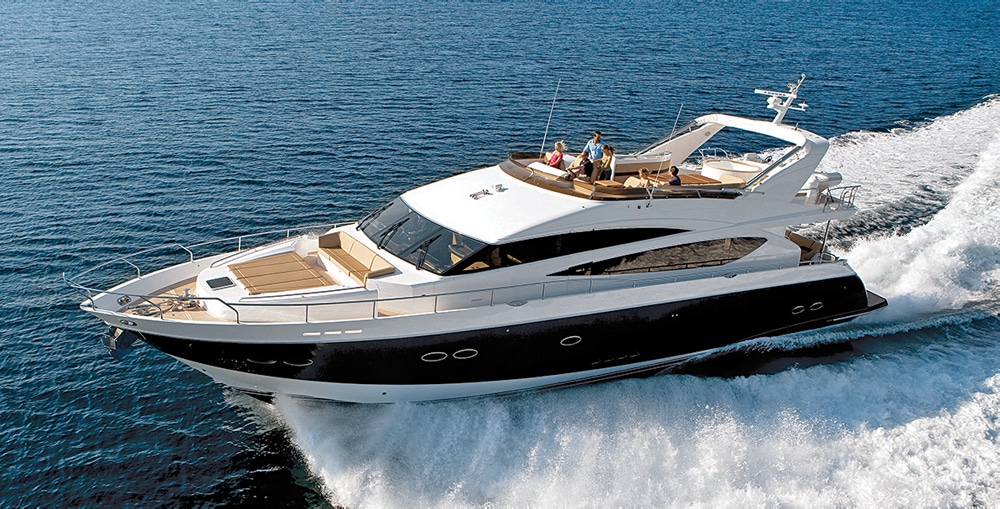
Stable Mates
Intact and damaged stability are separate but closely related issues, and both are critical to your safety at sea. Intact stability relates to your boat’s ability to stay right side up and avoid capsize, whether caused by waves, wind, onboard loads placed too high or too far off center, or just a sudden turn. Damaged stability is a similar measure, but with the added complication of flooding caused by damage to the hull.
Stability is measured in a number of ways. The simplest and most common is_ initial metacentric height_, or GM. The acronym refers to the vertical distance between the boat’s center of gravity, G, and the metacenter, M. The metacenter is a point about which the boat pivots as it rolls from side to side, a bit like the hinge point, or top of the chains, on a child’s swing.
Stability can also be evaluated by determining the range of positive stability, or how far the boat can heel and still roll back upright on its own. The third and most complete method of evaluation is to create a graphical plot showing the stability over a range of heel angles. The total area under the resulting curve is referred to as righting energy.
The determination of how safe a boat is, stabilitywise, is a matter of debate. The following considerations, while generalizations, illustrate the factors that must be considered when deciding how stable a boat should be. Self-righting vessels, typically lifeboats and rescue boats, can roll 360 degrees. The problem is that such a design imposes considerable restrictions on the shape of the superstructure and the layout of the accommodations, and may also dictate the carriage of unnecessary ballast.
Multihull vessels such as catamarans have very high initial stability, often rolling very little in moderate seas. The tradeoff is that they also have a more limited range of positive stability, so that when they do roll to large angles, they are prone to keep going through 180 degrees, “turning turtle.” Dinghy sailors are familiar with the exhilaration of lifting the windward hull, but they also know that with just a bit more force, the boat can easily capsize.
Monohulls generally have lower initial stability, but their range of positive stability is greater. This means they will roll easier, to a greater heel angle, but they can withstand that roll, even suffer a 90-degree “knockdown,” without capsizing.
Beyond the safety considerations, stability also affects comfort. When subjected to a given sea state, a boat that is overly stable will not roll to as great an angle, but it will roll very quickly. Big, slow rolls can be uncomfortable, but quick rolling at smaller angles is more so, even dangerous to the boat and its crew. So-called “snap rolls” can damage structure, scatter belongings throughout the cabin, and knock unsuspecting guests off their feet, leading to injuries.
Damaged stability is evaluated using the same measurements as intact stability—metacentric height, range of positive stability, and righting energy— but with water inside the hull. Anyone who’s stepped from the dock into a small open boat after a rainstorm knows what water in the hull can do to stability. It’s the same with a large yacht as with a small open boat, so the goal is to keep water out of the hull. Failing that, the addition of watertight bulkheads, creating multiple watertight compartments, can limit the amount of water. Containing the water in a smaller portion of the hull limits the adverse effects on stability and gives the bilge pumps a better chance to keep up with it. The more bulkheads and compartments the better, purely from the standpoint of stability, but those extra bulkheads can limit arrangement options and require more watertight doors, which gets expensive in a hurry.
Yacht designers and builders strive to create boats that strike acceptable compromises. Stability standards are established on both national and international levels, and these continue to be evaluated. Boaters can play their part, too, by understanding which type of hull, and which level of stability, is most appropriate for their intended cruising.









